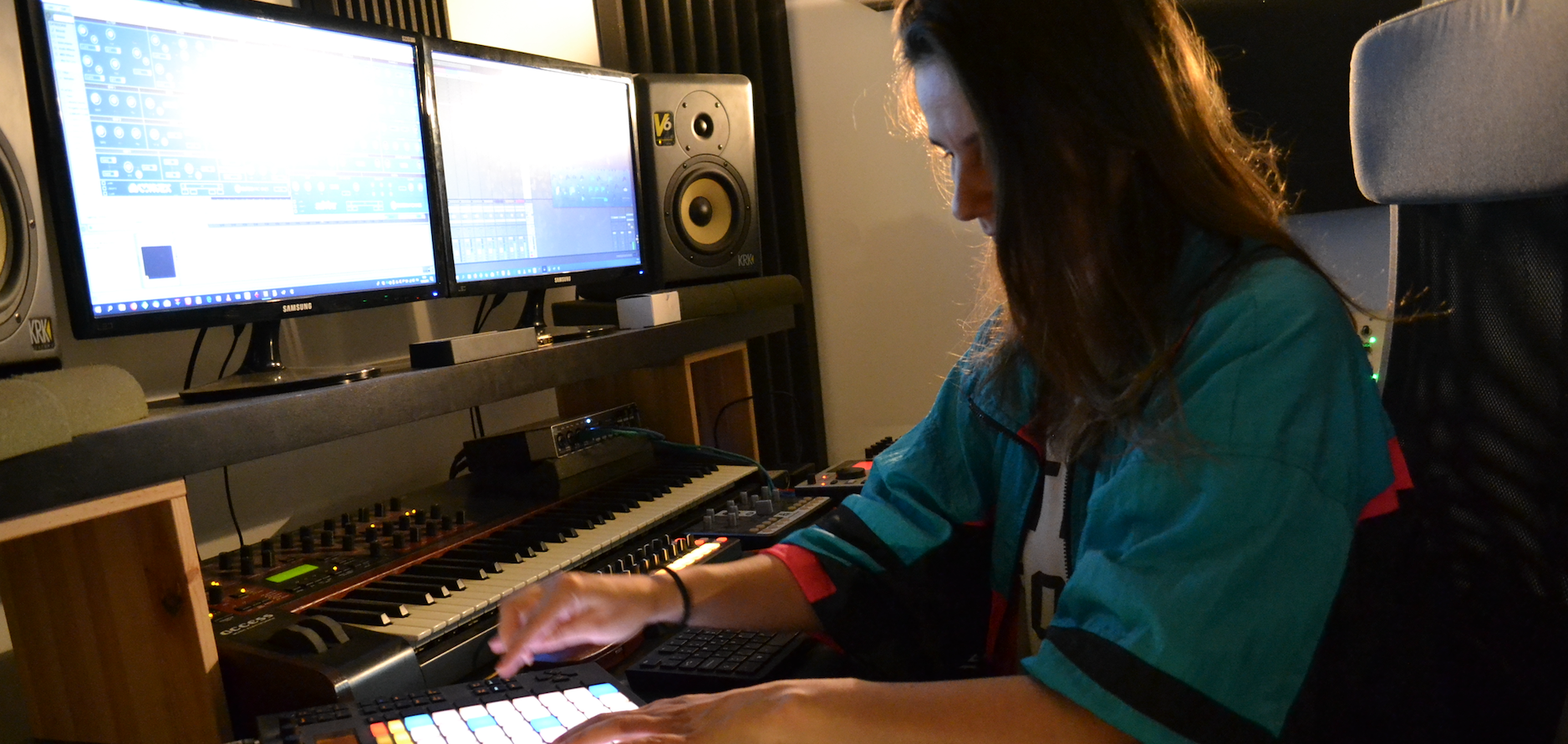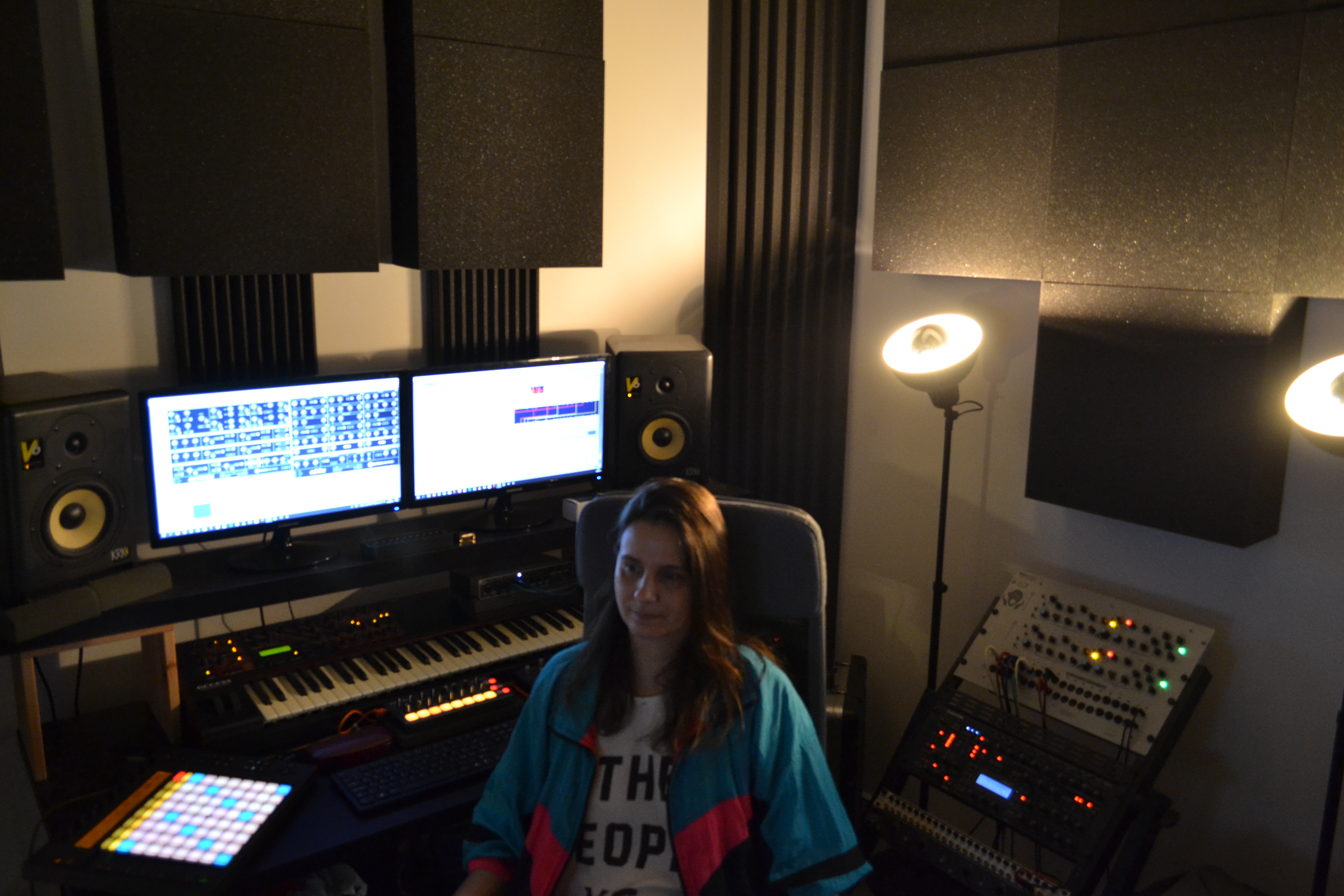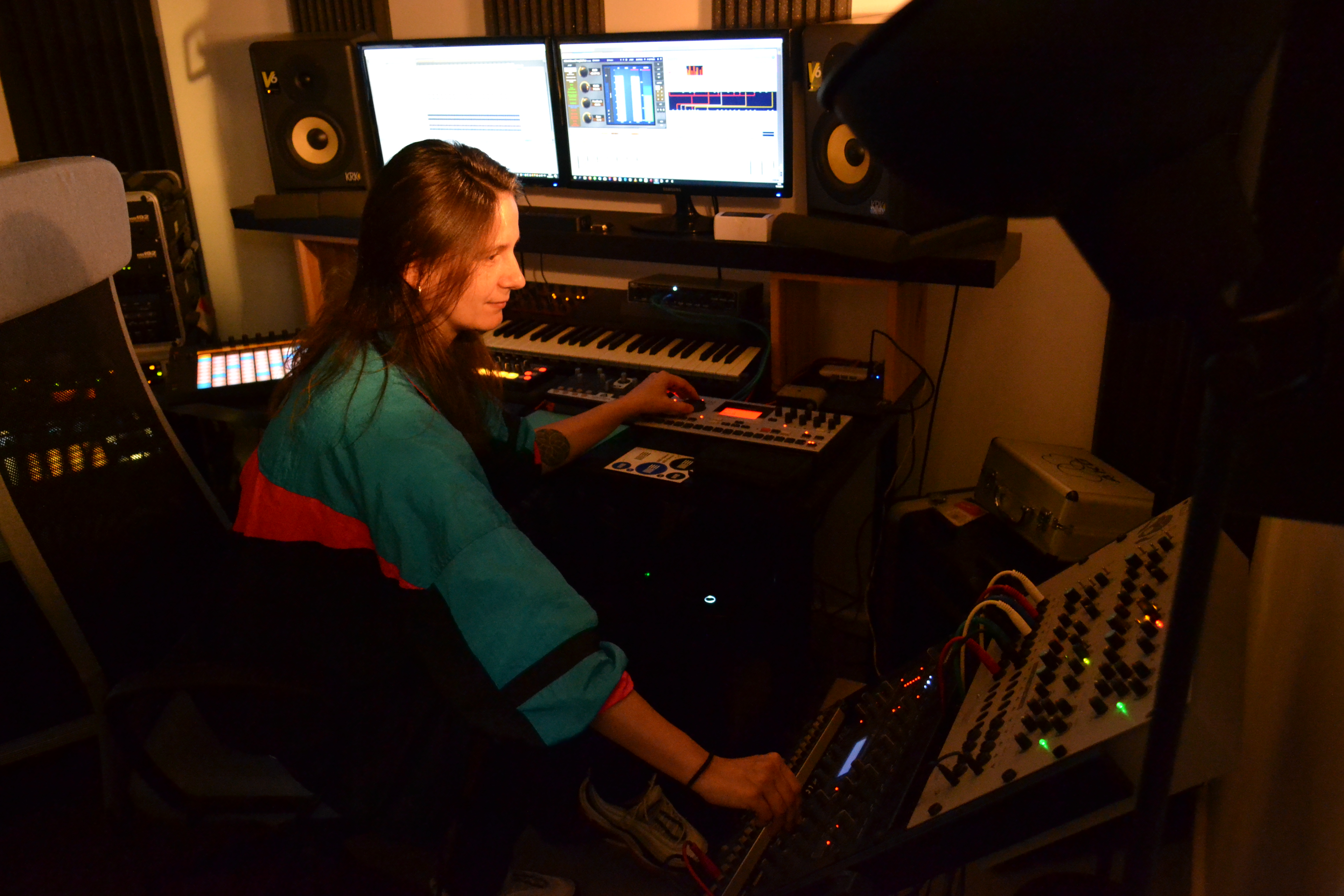Artist Tips: Dana Ruh
Production talk with one of minimal's most understated names.

Artist Tips: Dana Ruh
Production talk with one of minimal's most understated names.
Inside the close-knit community of stripped-back minimal, Dana Ruh is an admired and much-loved artist. She goes about her work—producing, DJing, and running a label—quietly, delivering consistent quality without ever screaming about it. Her discography encompasses a wide-range of takes on these styles, all of which wiggle their way into DJ bags the world over. Fans of the bigger names in these sonic terrains, artists like Ricardo Villalobos, Zip, Sonja Moonear, etc., will almost certainly have heard her work, even if you don’t know it. Resident Advisor called her a “quiet achiever,” and it’s difficult to see it any differently.
Growing up in Germany’s small town of Gera, Ruh found her way into music through her mother. Attendance at local parties through the ’90s inspired her to begin her own collection of records, and no sooner was she playing them out at any opportunity, all the while working full-time as a Production Manager for MTV Germany, having moved to Berlin in 2002. Soon thereafter, with her focus on music growing, she began producing her own, quitting her job to minimise her distractions.
Ruh’s early sound was rooted in smoky house and techno, a little deeper and darker than her music today. She released it through Brouqade, founded in 2007, where she’s also welcomed Kamran Sadeghi, Danilo Schneider, and Arno (a.k.a Einzelkind), who will release his debut album on the label later this summer. Much of her more recent output is rooted in seductive groove and woozy atmospherics, but she’s widened this palette on two albums, 2014’s Naturally on Jus Ed’s Underground Quality and 2018’s D’s Folder V via her Cave Recordings, a “playground,” she’s said. Since its 2016 inception, she’s released there once a year.
With over a decade of production under her belt, and a discography as high in quality as it is in quantity, there are few artists better positioned to advise on the art. Coinciding with her performance at this year’s UP Festival in Prague, Ruh shared with XLR8R some of the key pointers for fine-tuning your work.
Dana Ruh is performing at this year’s UP Festival, taking place in Prague this coming weekend. More information can be found here.
There is not a real formula when it comes to production but there are some things that helped me to create, to be more confident, and to grow as an artist. I’m not going to go into too much technical detail; these are more general tips that I’ve learned.
Know your environment
It’s a basic but very necessary thing: know your room and know your speakers. I’ve been working with the same speakers, the Yamaha MSP3 studio monitors, for many years; they are small, but I’ve done so much music on them that I know exactly how I have to work and what I can expect from them. Some people think they need better speakers to get better productions, mixes, or so, but I think this is an easy excuse and really unnecessary, provided your speakers meet the basic requirements. It’s more important to really know your speakers; and remember that changing your speakers can help but that it will always take some time to get used to them, and this period of adaptation might be better invested elsewhere.
Also, you must know your studio, whether it’s in your bedroom or elsewhere; every square meter of it! There might be points where you can’t hear certain things, and you have to do all you can to fix this if you can. (I used to think that you can adapt your work patterns, for example rolling your chair to the best spot, but this doesn’t work in the long term.)
If you use an absorber and a diffuser to optimize the sound, it’s likely that you’ll find a “dead hole” in terms of the bass frequency when you are at your desk. This means that the deep frequency is not optimized for the room, between 30 to 300Hz. So you have to figure out where to put the bass traps, which can be found easily online. Once you do this and install them, you will hear the bass in your mixing position and this means that your mixes will be more accurate and your choice of sounds will likely be better.
I know my studio perfectly; I know exactly what to do to hear the full range of sound—the highs, mids, and the bass. Getting to this stage will take you a bit of time but the more time you invest and the more you produce, the more you know. It really is an essential thing.
In order to get to know my speakers and my room, I did the following experiment: I took one of the tracks that I know works on every system in nearly every club, and analyzed it with a spectrum analyzer, checking the frequencies to understand how they sound on my speakers. I produced a track and compared the sound characteristic with the track I knew that sounded so good. Then I played it out and checked if it came close to the sound quality of the reference track.
Don’t overthink
It’s so easy to overthink while you’re creating. This doesn’t help the creative process (it may help finishing a track, or mastering, or mixing it because these are more conscious parts of the process, but certainly not the start.) You have to learn to go with the flow. It always helps me to remember that what I’m working on isn’t going to be my last track, and maybe that will work for you.
If you find yourself heading in a certain direction, try to finish even if you reach the point where you feel like it’s not very good. If you listen tomorrow then you might be surprised; sometimes your brain can be too tired to make an accurate judgment. Lots of my tracks on Cave Recordings, for example, didn’t sound good at first but they really grew on me once I had rested.
I think it’s a lot easier to do this if you are aware of who you are musically. To really be able to relax, and to avoid over-thinking about which direction you want to go with a track, you first have to know what you are as a musician, in your core. And this takes time and patience.
I think it takes time to learn not to follow trends and hypes, and that only your musical core matters. Be prepared to accept that not everybody will like what you do; one of the worst things is to try to please everybody. Also, don’t produce to release. Make music to discover yourself and to understand yourself. Stay true. Remember this, especially when you become successful because then it becomes even harder to stick to this ethos. Collect your music and release it when you feel like releasing, and more importantly also because you feel like you have something you want to present.

Don’t force it if it’s not coming naturally
As soon as I walk in the studio, I can tell whether something is going to come out or not. I’ve learned to never force things to happen. If it’s not happening then it’s not happening. The result after trying and trying can be more frustration; and it’s often better to go out, have a walk, and do something else. You will then be better positioned the next time you are in the studio when you start again.
I normally give myself a few hours (maximum four) and if after this period I have nothing that excites me, I leave and simply do something else. Live life. Meet with friends, do something that inspires me. Go to an exhibition. I do very normal things to get myself in the right place. This is enough for me. I don’t think you should sit there and wait for something that simply won’t come. I take this as a sign for me to rest the mind and come back with new ideas.
“I think often people buy lots of gear to hide for the fact that they have no idea or inspiration to really create. And often people use a lack of gear as an excuse for not being able to make something.”
It’s not what you have; it’s what you do with it
I know artists who do their best tracks in their bedroom or in headphones. You don’t need the biggest studio to create. In the end, music is a feeling, and it comes out of the inside. I think there are things that can help to realize what you have inside but I’ve always made a point of limiting myself to the things I am using; I prefer to know my instruments all the way rather than having lots of gear that I don’t really know. I’ve had a lot of people tell me that I need something, but only I really know what I need to express myself and I also believe that limitation helps creativity. I think often people buy lots of gear to hide for the fact that they have no idea or inspiration to really create. And often people use a lack of gear as an excuse for not being able to make something. This is a weakness. In my own experience, I’ve often bought gear that I thought I would need and then resorted back to old equipment that I know works.

Use filters for texture
Some artists are good with a modular, but I’ve come to realize that I’m just not patient enough. However, I do really like the sound of modular because it’s more alive, so I try to achieve something similar with filters, which are a very important tool in my production. I listen to my tracks again and again and again, which helps me to understand whether it annoys me at a certain point. And while I listen back, I do all kinds of automation with filters.
One of my favorite filters is FabFilter Saturn. It comes with a range of presets that I really like and I use to make the sound I want. I also don’t always want my chords to sound clean and so I normally destroy them a bit with saturation and distortion. I use the automation on feedback, drive, and tone. I record it into audio and go over it again, record again, and so on.
Collaborate to learn
Collaboration is really important for self-development, and I think you should always look to work with new artists, especially those with novel approaches and different patterns of production. This can help you greatly. It gives you new input; you can exchange ideas and get to know another perspective. Look for some people who understand your artistic approach and run things by them. And remember that these people must be willing to give you honest feedback. It makes no sense to surround yourself with people that always tell you that all is amazing; you need critics in every form to develop. So always keep your eyes and ears open to collaboration, and don’t be afraid to ask.
I’ve worked with a few people together over the years, and from each artist I’ve worked with I’ve learned something. I learned about arrangement while working with Andre Galluzzi years ago; I learned from Jus-Ed to be brave and to try things that maybe are a bit more out there. From Gabriele Carasco, I learned a lot of techniques to improve my sound. I also learned that I can achieve a lot with digital software and that I don’ t have to get all that gear to make good music. Lately with Arno (a.k.a Einzelkind,) I’ve started to enjoy again jamming around and the beauty in spontaneity.
If it only sounds good loud then it’s not really good
I always do my mixes on a low volume. If a track only sounds good loud then it’s not a good enough track. My productions are based on vibes, and this means I have to feel something from them, and I want to feel that thing on a low volume. If I can feel it on a low volume then I will definitely feel it in a club on a big system.
This also helps me in the mix, where I must find the balance between all elements, bringing them together, EQing, and making more space in the track for all elements. I also do panning; it opens up the track and gives room. Bass goes center and then I build percussion around it. If I have two synths sounding similar, I put one left and one right. I also check this with headphones; I don’t want the elements to sound too far from each other. After that, I do the final mix, checking all the levels again. And always leave enough headroom for the mastering. No limiter on it, before mastering.

